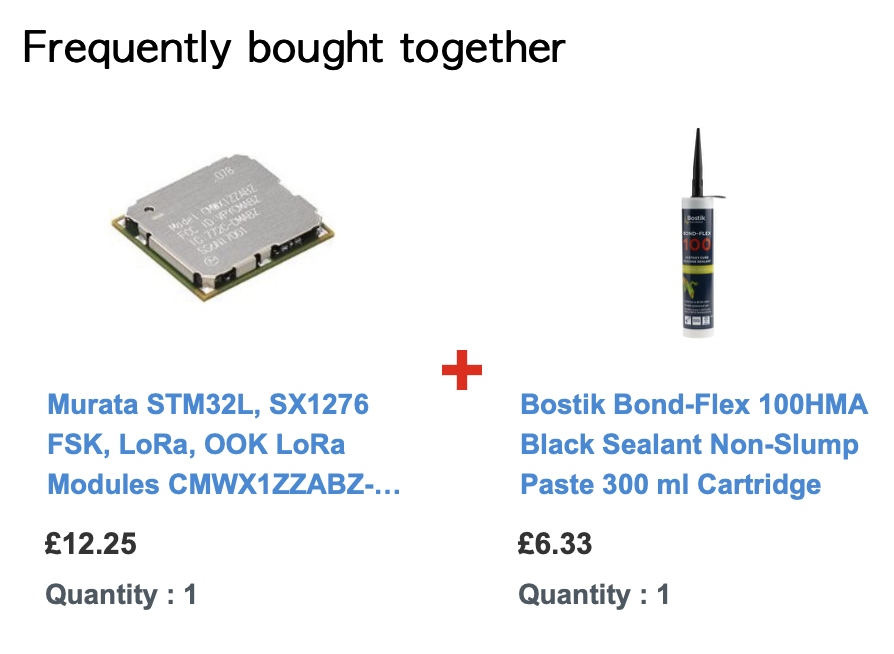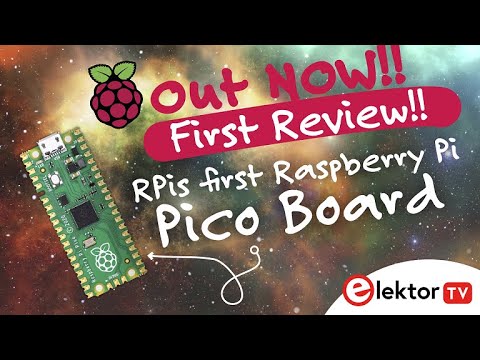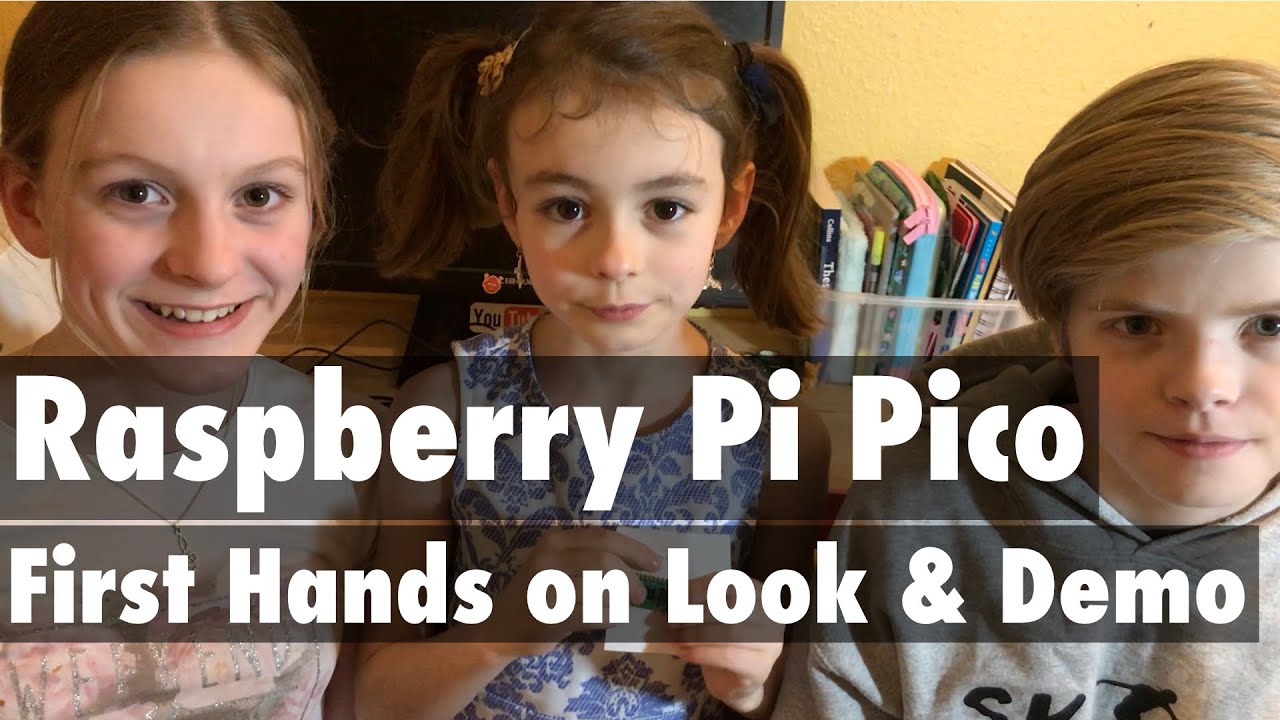It’s $3k
New Tracker solution from Digital Matter using LoRa Edge/LR1110
Pi Foundation has released a new small unit - the Raspberry Pi Pico - Pi2400
Looks like it may be good for hackers and device makers 
RP2040
Designed by Raspberry Pi, RP2040 features a dual-core Arm Cortex-M0+ processor with 264KB internal RAM and support for up to 16MB of off-chip Flash. A wide range of flexible I/O options includes I2C, SPI, and — uniquely — Programmable I/O (PIO). These support endless possible applications for this small and affordable package.
Specification
21 mm × 51 mm form factor
RP2040 microcontroller chip designed by Raspberry Pi in the UK
Dual-core Arm Cortex-M0+ processor, flexible clock running up to 133 MHz
264KB on-chip SRAM
2MB on-board QSPI Flash
26 multifunction GPIO pins, including 3 analogue inputs
2 × UART, 2 × SPI controllers, 2 × I2C controllers, 16 × PWM channels
1 × USB 1.1 controller and PHY, with host and device support
8 × Programmable I/O (PIO) state machines for custom peripheral support
Supported input power 1.8–5.5V DC
Operating temperature -20°C to +85°C
Castellated module allows soldering direct to carrier boards
Drag-and-drop programming using mass storage over USB
Low-power sleep and dormant modes
Accurate on-chip clock
Temperature sensor
Accelerated integer and floating-point libraries on-chip
Also looks like there is a new Getting Started book based on this:
Nice board with dual-core ARM for a very attractive price (’$4’).
I see it being advertised by local resellers for €4.02, others €4.50 and €4.95.
First batches appear to be available in a week.
I briefly scanned the C++ SDK documentation.
I saw no mentioning of a familiar development framework (e.g. Arduino or ARM related), no mentioning of (Free)RTOS.
Maybe main focus will be MicroPython?
What about community, availability of libraries for sensors, displays etc?
Thanks @jeff-UK. Actually, the quote is not mine and likely belongs to someone else in our organisation. But the rest of the article is correct. This has been a fun solution to create from a technical perspective and we’ve learned a lot along the way. It wouldn’t have been possible without TTN and our city council customers. University of Wollongong created the Pedestrian Index Research Report from our customer data, with their permission.
To update wrt dev bds & environment Arduino are now on board and using the same 2040 chip from the Pi foundation for their own products 
Arduino Nano RP2040 Connect
A quick review of the C SDK that was published a couple of days ago on GitHub looks to me to be an ST/Microchip killer in terms of clarity - a particularly good stepping stone for those moving from “Arduino C” to using more of the MCU’s features for real. They aren’t mandating a “familiar development environment”, they suggest Visual Studio Code, you can use your own editor, there are instructions for Eclipse & CLion setup. The code is very similar to other more usable eco-systems so NotePad++ and the command line should work!
I think RPI foundation has got that as a solved solution with a huge base of users / fans / techies who will all oblige - the tidal wave of ports of libraries will no doubt spawn yet another package manager solution or two or more.
As for a FreeRTOS port, give them a freaking chance!
Semtech announce new Baseband device as part of the SX13xx family - SX1303 - looks to be footprint compatible with recent SX1302 adding fine timestamping for geoloc
Hi Jeff, Does this make the SX1302 technically obsolete?
Apart from same footprint, I know it also uses the same software as the SX1302.
Unless there is a huge cost difference between the two I would assume future gateways will be based on the SX1303.
I don’t know yet as not had chance to look at device differences in detail. Given how much more ‘geoloc’ GW’s sell for c/w standard ones and given SMTC charge a licence for them I would not be surprised if they don’t take a premium and then cost more same as with sx1301 vs sx1308, and then some. As you say if price too close and if volume pricing can close gap c/w lower volumes of 1302 then no brainier to standardise on the 03, which is another strategy SMTC could follow as makes geoloc gw the default and helps them proliferate - to the benefit of all! The devil will be in device detail and total BOM/build costs… will look closer after TTConf this week. Note several SMTC presentations at the event which may give clues…or we can ask live questions and see what horses mouth has to say 
Bit of luck and they may sell the silicon for the same price but include an unlock mechanism with a code per gateway so you can upgrade it if you want to use it.
Had a look at OEM costs for the 1303 a few weeks ago and it was close to the 1302 cost. Ha quick read of the data sheet and found the S/W is the same, pinout is the same. So unless there is a downside I can’t see why the 1302 has a future.
Was only a skim read, so i may have missed something
More market stats and IoT comm tech assessments for anyone interested
1 key take away for LoRa/LoRaWAN:
LoRa leads in LPWA technology: By 2026, LoRa is expected to be the leading non-cellular LPWA network technology and will account for over a one-fourth share of all LPWA network connections and more than half of all non-cellular LPWA connections. Total non-cellular LPWA connections in 2026 are expected to reach 1.3 billion.
A new LoRaWAN module based on Renesas RL78 MCU + SX1262
Helpful hints on LoRaWAN purchasing from RS Online:

300 ml, that will suffice for a large batch of modules. 
Arduino IDE v2.0 beta available
The new IDE is based on the Eclipse Theia framework, which is an open source project based on the same architecture as VS Code (language server protocol, extensions, debugger). The front-end is written in TypeScript, while most of the backend is written in Golang.

